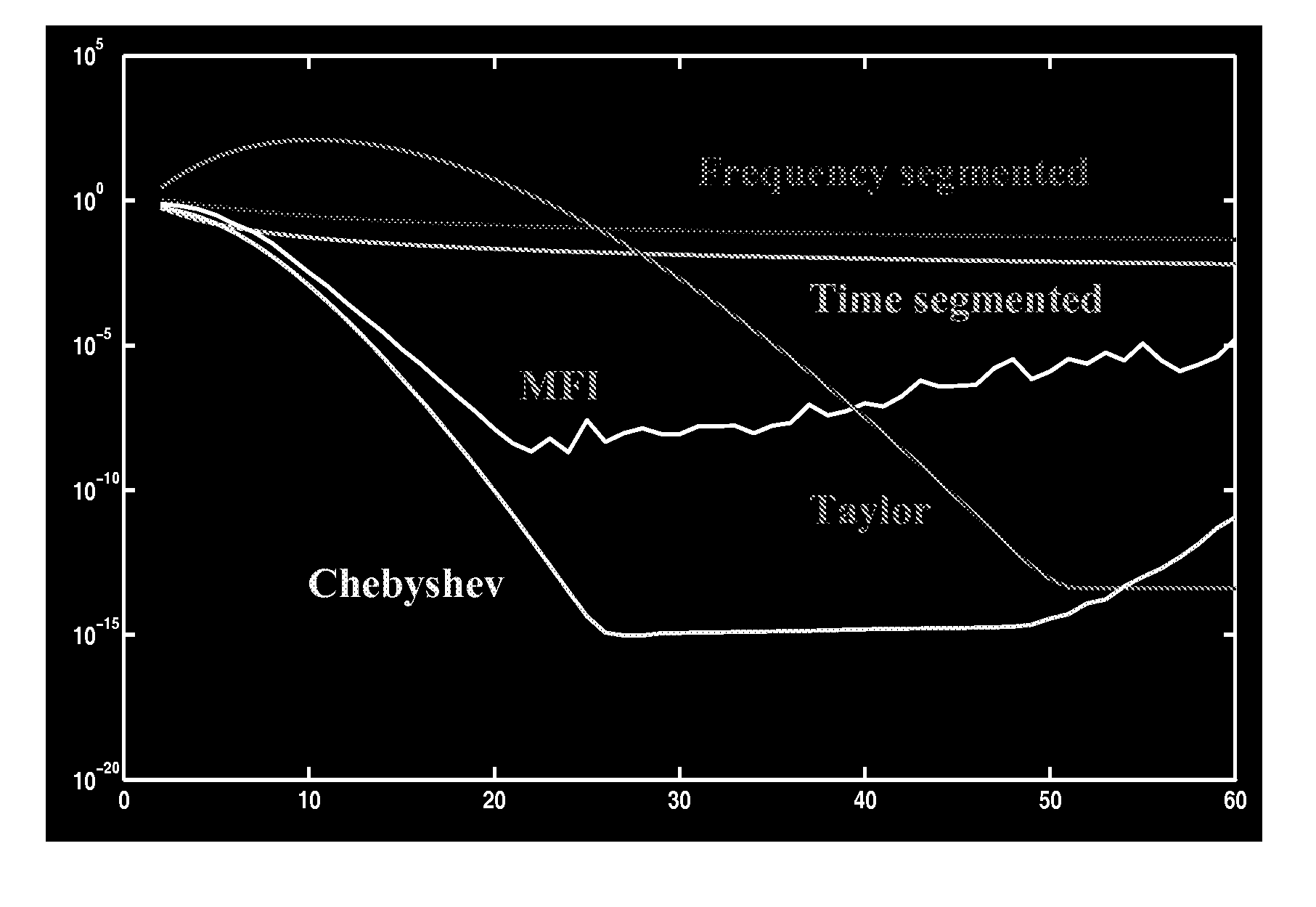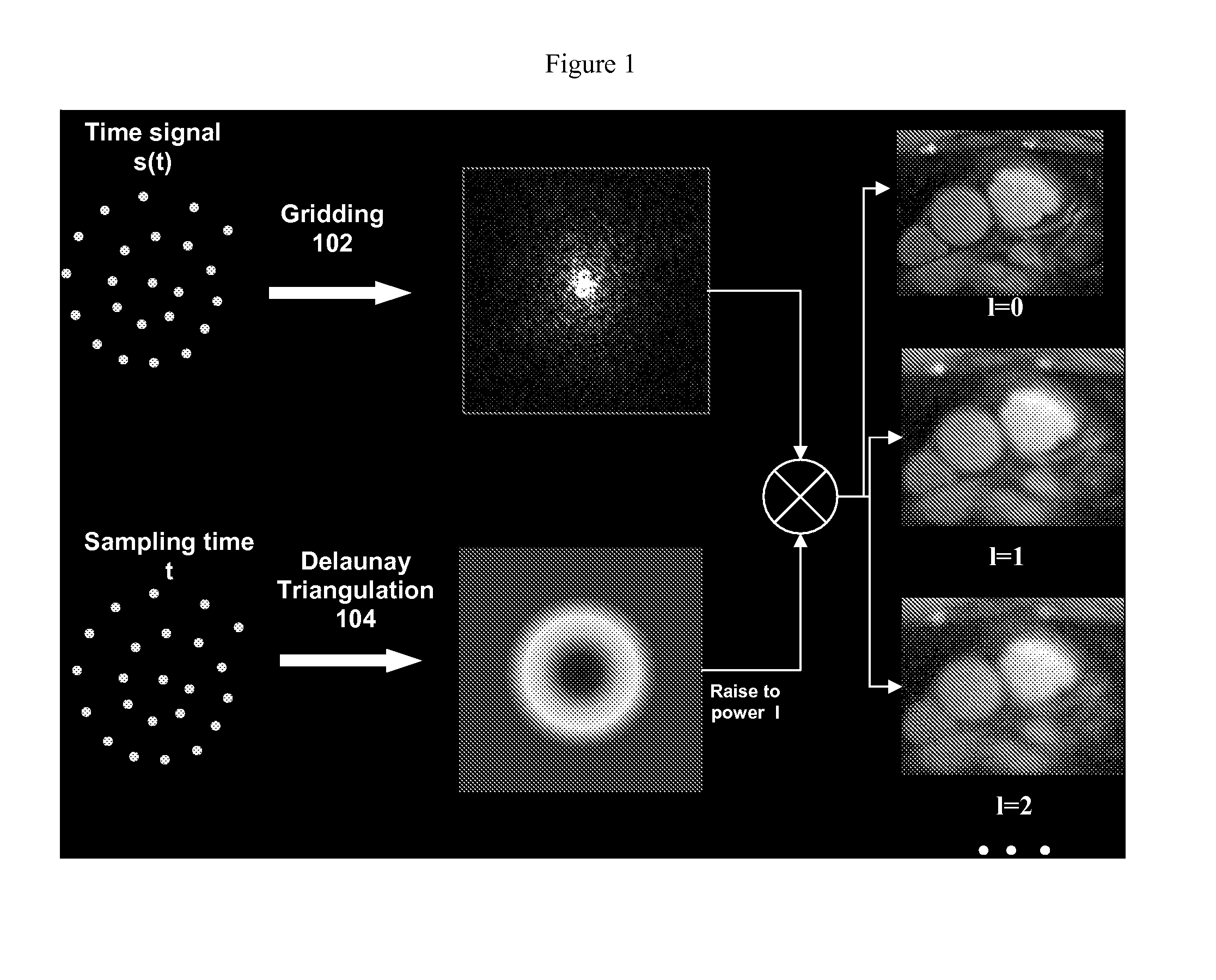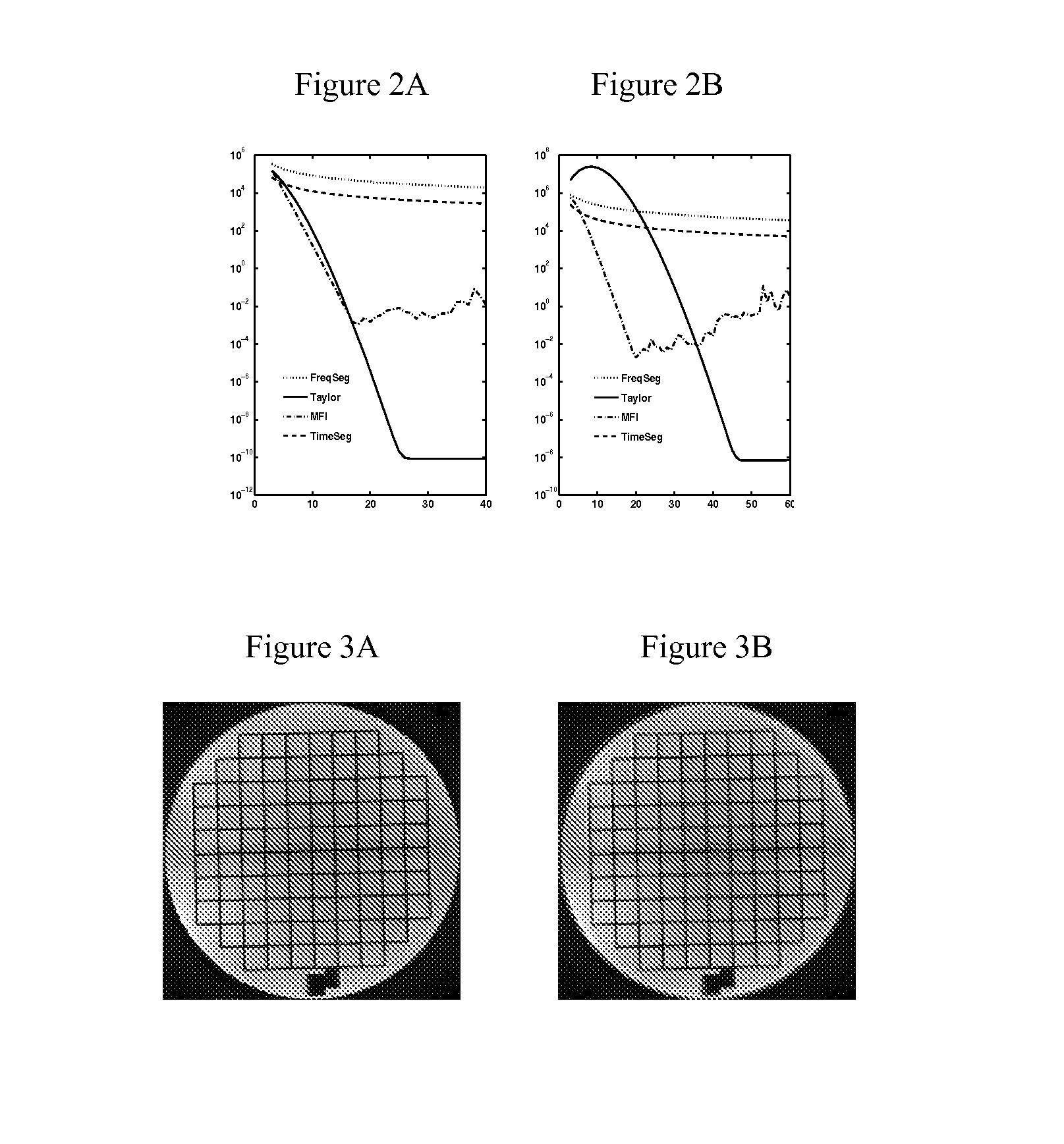System, method and computer program product for fast conjugate phase reconstruction based on polynomial approximation
a polynomial approximation and conjugate phase technology, applied in tomography, instruments, applications, etc., can solve the problems of increasing blurring artifacts in some parts of the image, inability to accept image degradation, geometric distortion and intensity variations, etc., to reduce computational cost, computational efficiency, and computational cost
- Summary
- Abstract
- Description
- Claims
- Application Information
AI Technical Summary
Benefits of technology
Problems solved by technology
Method used
Image
Examples
Embodiment Construction
[0031]Preferred embodiments of the invention will be set forth in detail with reference to the drawings, in which like reference numerals refer to like elements or steps throughout.
[0032]The preferred embodiments use polynomial expansions of the off-resonance phase accrual term, namely,
eiΔω(r)t≈α0+α1t+α2t2+ . . . +αtntn+ [2]
[0033]The expansions are converging infinite series; however, the approximations terminate the series at some point, as disclosed below.
[0034]The first preferred embodiment replaces the phase term with its Taylor expansion, which can be expressed as follows:
[0035]mCP(r)=∑n[jΔω(r)]nn!mn(r),withmn(r)=∫tW(t)tnexp[j2πk(t)·r]ⅆt,n=0,1[3]
, with mn(r)=∫tW(t)s(t)tnexp[j2πk(t)·r]dt, n=0,1 [3]
[0036]where mn(r) are referred to as base images. The base images can be reconstructed by replacing the time signal s(t) with its multiplication by tn followed by conventional gridding reconstruction. The direct calculation of the base images requires performing ...
PUM
 Login to View More
Login to View More Abstract
Description
Claims
Application Information
 Login to View More
Login to View More - R&D
- Intellectual Property
- Life Sciences
- Materials
- Tech Scout
- Unparalleled Data Quality
- Higher Quality Content
- 60% Fewer Hallucinations
Browse by: Latest US Patents, China's latest patents, Technical Efficacy Thesaurus, Application Domain, Technology Topic, Popular Technical Reports.
© 2025 PatSnap. All rights reserved.Legal|Privacy policy|Modern Slavery Act Transparency Statement|Sitemap|About US| Contact US: help@patsnap.com



